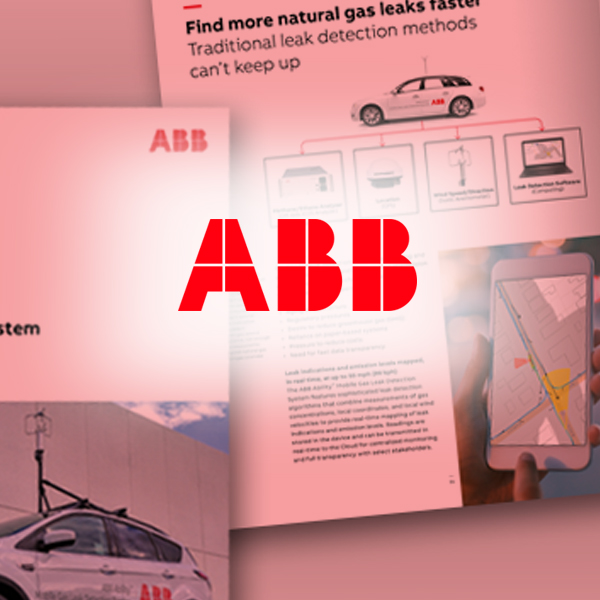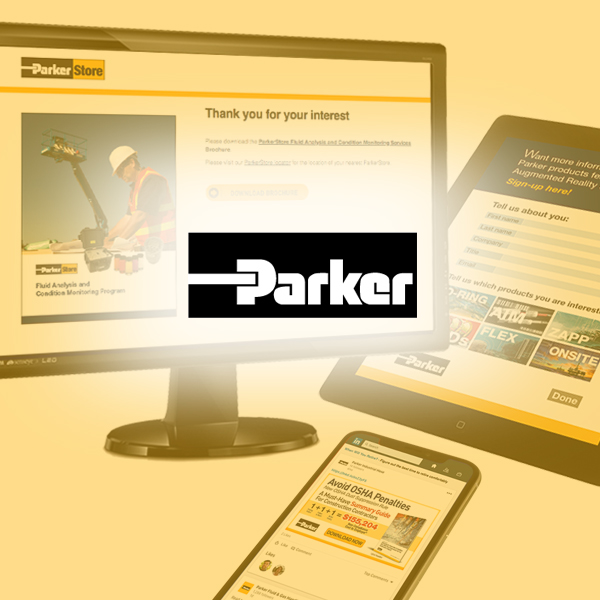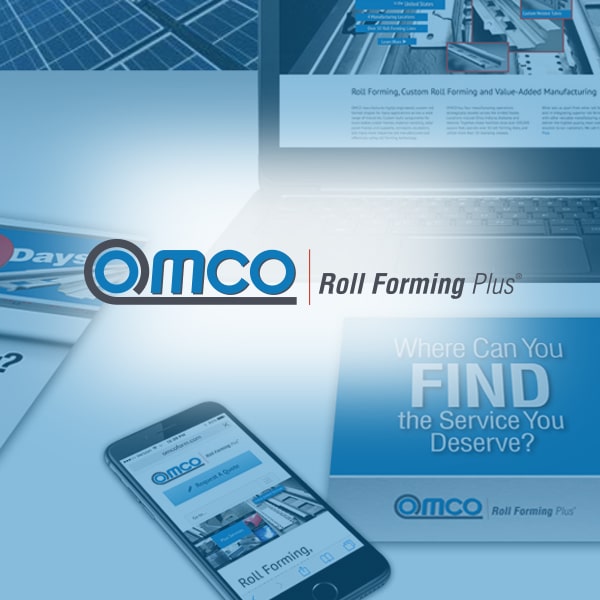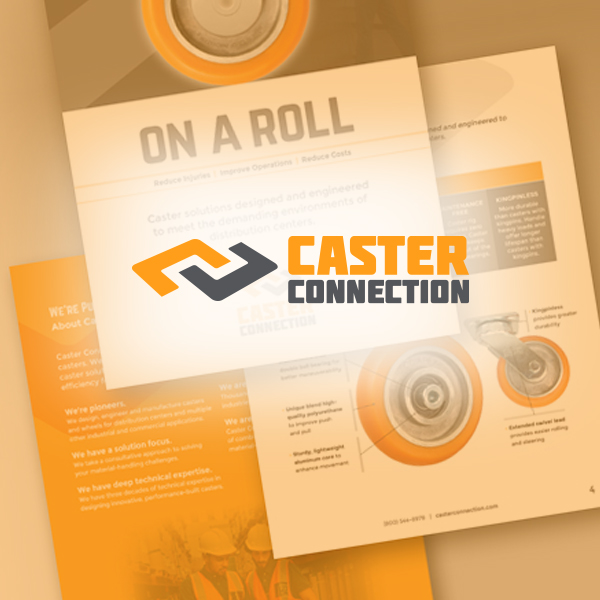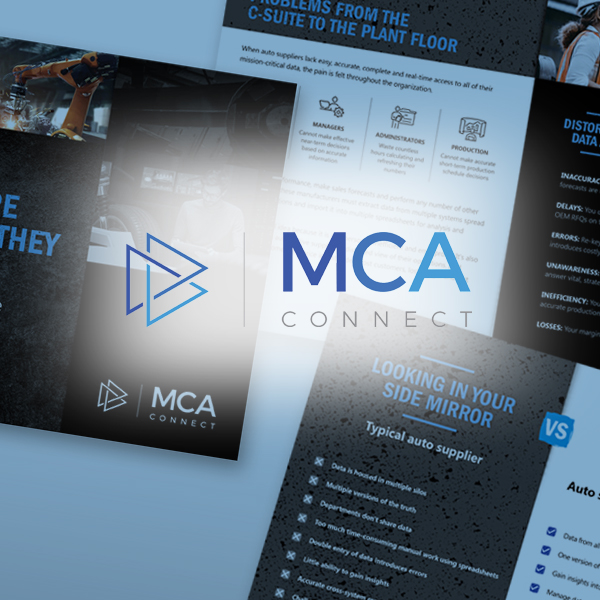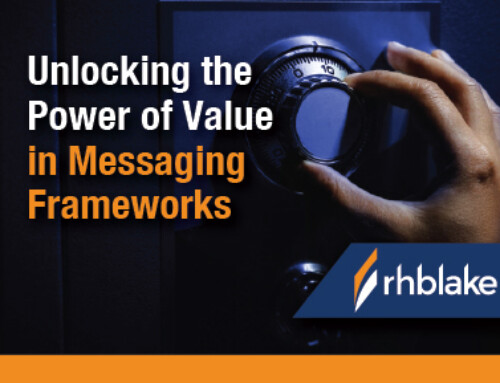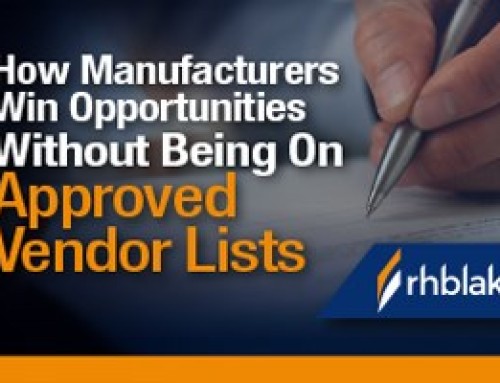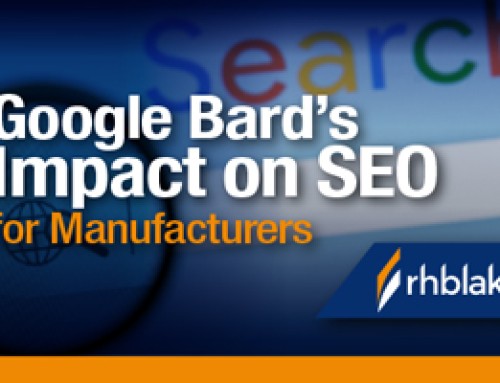Does your sales team need a sales playbook? After all, in consultative selling, no two conversations are ever alike.
How to Create Effective B2B Sales Playbooks – Insights for Manufacturers
Does your B2B sales team need a sales playbook?
After all, in consultative selling, no two conversations are ever alike. Plus, with every sales engagement, your salespeople get smarter around how to better present your offerings and educate your customers. If you want to increase confidence and give your salespeople the best chance of winning, you need a Sales playbook.
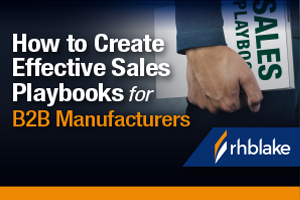
The main purpose of a B2B sales playbook is to ensure consistency in sales efforts and to increase the efficiency and effectiveness of the sales team. By using a step-by-step guide on how to sell a product or service, sales people reduce the time and effort required to prospect for leads, start conversations, qualify prospects, pitch products and services, negotiate, close deals, ultimately leading to increased customer acquisition and sales revenue.
Here are some common questions about how to create—and-use—sales playbooks to boost your effectiveness, and numbers.
If you are a B2B manufacturer with a sales team, and if you want your team to be as effective as possible, follow these best practices for creating and using a sales playbook.
Q. What is a B2B sales playbook?
- A B2B sales playbook is a comprehensive document that provides a framework for sales teams to follow. It is a strategic guide that helps manufacturers (and other types of businesses) plan and execute their sales activities in a structured and organized manner.
Q. What should a B2B manufacturing sales playbook include?
- Sales playbooks should include everything a salesperson needs to have meaningful conversations with multiple stakeholders when selling complex offerings. A playbook typically includes information on the target audience, sales process, messaging, and best practices.
A good playbook includes:
- Information on the company’s ideal customer profile
- Information on the company’s ideal buyer personas
- Details on the marketplace opportunity for the product or service
- Market analysis
- Competitor research
- Sales process (including prospecting, qualifying leads, and closing deals)
- Templates for outreach emails and call scripts
- Key messaging
- Elevator pitch
- Guidance on objection handling
- Guidance on negotiation
Q. What role do buyer personas play in a sales playbook?
- Buyer personas play a vital role in sales playbooks because they identify the target audience. Salespeople use this information to understand their prospects’ pain points, needs, goals, challenges, buying criteria and more. They then tailor their messaging accordingly.
Q. How should a B2B manufacturing sales playbook be structured?
- Follow this proven structure:
- Introduction: Explain the purpose of the playbook and its intended audience
- Company Overview: Provide an overview of your company, including its history, products, services, and market positioning
- Sales Strategy: Outline your company’s overall sales strategy and approach
- Sales Process: Describe the steps of the sales process, including prospecting, qualifying, presenting, negotiating, and closing
- Messaging: Describe your key sales messages, including your competitive differentiators, elevator pitch, features and benefits and other vital messages. Pay particular attention to customizing your messages for each buyer persona and stakeholder at each account. Purchases of complex offerings typically involve buying committees, and your messaging must resonate with everyone on the committee who influences a purchase
- Sales Tactics: Detail the tactics your sales folks are to use to achieve the goals of each step of the sales process
- FAQs: List the answers to questions that buyers frequently ask
- Qualifying Prospects: Explain the process of identifying and qualifying potential customers
- Presentation Techniques: Describe best practices for presenting products and services to prospects
- Negotiation Strategies: Provide strategies and tips for negotiating with prospects
- Closing the Sale: Outline the steps to close the sale and secure the customer
- Resources: Include a list of resources for salespeople to use, such as templates, scripts, and checklists
- Conclusion: Summarize the key points of the playbook and provide a call to action.
Q. What are the advantages of structuring our sales playbook this way?
- The primary advantage of organizing your sales playbook like this is that you create a set of modular assets that you can use in multiple places, in many ways, for multiple markets and audiences. You create a set of buyer personas, for example, that you use throughout your marketing efforts to inform your strategy. You also create conversation starters, objection-handling scripts, and key messages, all of which you pull from the sales playbook as needed to help your sales team, and even your marketing team, to meet specific sales and marketing challenges.
Q. How should B2B manufacturing salespeople use a sales playbook?
- Sales should start by studying the sales process outlined in the playbook. This helps them understand how to identify and qualify leads, build relationships with prospects, pitch solutions, customize messaging to each unique buyer persona, and close deals. Then they should follow the best practices outlined in the playbook. Sales should use these best practices to guide their sales approach and ensure they are using tested and proven methods for success.
Q. How can B2B manufacturing salespeople use a sales playbook to start conversations?
- Your sales playbook should feature a section on conversation starters. Over the space of a page or two, list the most common challenges, concerns, and objections that your typical prospects face when seeking a solution like yours. Be sure to arrange these items by buyer persona. After all, a production manager has different needs and goals than a director of finance director. And the CEO has different priorities and buying criteria than the IT manager does. Then craft these items into talking points. Turn them into questions, for example, that your sales folks can pose to potential buyers.
Q. How is a B2B manufacturing sales playbook different from a pitch deck?
- A pitch deck is a document your sales people use at a particular stage of the buyer journey. The deck pitches your solution. Your prospects see your pitch deck. A sales playbook, on the other hand, is an internal document that your prospects never see. It covers the entire buyer journey. Unlike your pitch deck, which is designed to persuade potential buyers, your sales playbook is designed to inform, educate and equip your sales folks.
Q. Where should we store our sales playbook?
- Store your sales playbook in a central repository, such as an intranet or sales enablement platform, so that you capture best practices in one place, and make improvements in one central location. Ensure that you have just one version of the document, located in just one place, so that your sales team always has ready access to the latest version of your playbook. Ideally, make your playbook available for use where no internet connection is available, so that Sales can use it when selling in remote locations, or sites that have spotty Wi-Wi connections.
Q. Why is PowerPoint typically the best way to format a sales playbook?
- PowerPoint is the best tool to use when creating a B2B sales playbook because it is easy to use, highly customizable, powerful, and universally available through your organization. With PowerPoint, you create professional-looking presentations quickly and easily. You also customize slides with your own branding and visuals, and add animations, transitions, and multimedia elements to bring your sales playbook to life. PowerPoint also allows you to collaborate with others, share your sales playbook online, and track analytics to measure engagement. This makes it the perfect tool for creating a B2B sales playbook that is professional, engaging, and memorable.
Q. How often should we update our sales playbook?
- Your B2B sales playbook is a living document that you must constantly update to reflect changes in your market, products and services, and feedback from your sales team and buyers. It is an essential tool for any business looking to scale its sales efforts and maintain consistency in its messaging and approach.
Conclusion
Creating a B2B sales playbook for your manufacturing company or technology that sells into manufacturers is a great way to ensure that your sales team has the resources and information they need to be successful. By following these best practices, you will create an effective, impactful sales playbook that your team uses to close more deals. By taking the time to create a comprehensive sales playbook, you empower your team with the knowledge and resources they need to be successful.
Learn more about creating Messaging for New Manufacturing Product Launches
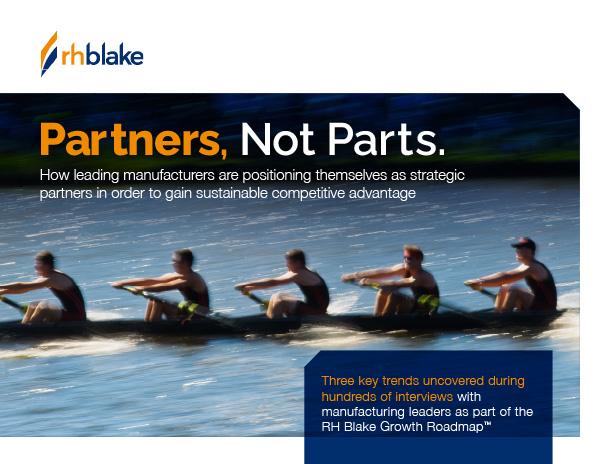
Why do customers prefer manufacturing partners over vendors?
Key marketing insights gained after speaking with hundreds of manufacturing leaders who are involved in purchasing complex products and offerings.
Does your sales team need a sales playbook? After all, in consultative selling, no two conversations are ever alike.
How to Create Effective B2B Sales Playbooks – Insights for Manufacturers
Does your B2B sales team need a sales playbook?
After all, in consultative selling, no two conversations are ever alike. Plus, with every sales engagement, your salespeople get smarter around how to better present your offerings and educate your customers. If you want to increase confidence and give your salespeople the best chance of winning, you need a Sales playbook.

The main purpose of a B2B sales playbook is to ensure consistency in sales efforts and to increase the efficiency and effectiveness of the sales team. By using a step-by-step guide on how to sell a product or service, sales people reduce the time and effort required to prospect for leads, start conversations, qualify prospects, pitch products and services, negotiate, close deals, ultimately leading to increased customer acquisition and sales revenue.
Here are some common questions about how to create—and-use—sales playbooks to boost your effectiveness, and numbers.
If you are a B2B manufacturer with a sales team, and if you want your team to be as effective as possible, follow these best practices for creating and using a sales playbook.
Q. What is a B2B sales playbook?
- A B2B sales playbook is a comprehensive document that provides a framework for sales teams to follow. It is a strategic guide that helps manufacturers (and other types of businesses) plan and execute their sales activities in a structured and organized manner.
Q. What should a B2B manufacturing sales playbook include?
- Sales playbooks should include everything a salesperson needs to have meaningful conversations with multiple stakeholders when selling complex offerings. A playbook typically includes information on the target audience, sales process, messaging, and best practices.
A good playbook includes:
- Information on the company’s ideal customer profile
- Information on the company’s ideal buyer personas
- Details on the marketplace opportunity for the product or service
- Market analysis
- Competitor research
- Sales process (including prospecting, qualifying leads, and closing deals)
- Templates for outreach emails and call scripts
- Key messaging
- Elevator pitch
- Guidance on objection handling
- Guidance on negotiation
Q. What role do buyer personas play in a sales playbook?
- Buyer personas play a vital role in sales playbooks because they identify the target audience. Salespeople use this information to understand their prospects’ pain points, needs, goals, challenges, buying criteria and more. They then tailor their messaging accordingly.
Q. How should a B2B manufacturing sales playbook be structured?
- Follow this proven structure:
- Introduction: Explain the purpose of the playbook and its intended audience
- Company Overview: Provide an overview of your company, including its history, products, services, and market positioning
- Sales Strategy: Outline your company’s overall sales strategy and approach
- Sales Process: Describe the steps of the sales process, including prospecting, qualifying, presenting, negotiating, and closing
- Messaging: Describe your key sales messages, including your competitive differentiators, elevator pitch, features and benefits and other vital messages. Pay particular attention to customizing your messages for each buyer persona and stakeholder at each account. Purchases of complex offerings typically involve buying committees, and your messaging must resonate with everyone on the committee who influences a purchase
- Sales Tactics: Detail the tactics your sales folks are to use to achieve the goals of each step of the sales process
- FAQs: List the answers to questions that buyers frequently ask
- Qualifying Prospects: Explain the process of identifying and qualifying potential customers
- Presentation Techniques: Describe best practices for presenting products and services to prospects
- Negotiation Strategies: Provide strategies and tips for negotiating with prospects
- Closing the Sale: Outline the steps to close the sale and secure the customer
- Resources: Include a list of resources for salespeople to use, such as templates, scripts, and checklists
- Conclusion: Summarize the key points of the playbook and provide a call to action.
Q. What are the advantages of structuring our sales playbook this way?
- The primary advantage of organizing your sales playbook like this is that you create a set of modular assets that you can use in multiple places, in many ways, for multiple markets and audiences. You create a set of buyer personas, for example, that you use throughout your marketing efforts to inform your strategy. You also create conversation starters, objection-handling scripts, and key messages, all of which you pull from the sales playbook as needed to help your sales team, and even your marketing team, to meet specific sales and marketing challenges.
Q. How should B2B manufacturing salespeople use a sales playbook?
- Sales should start by studying the sales process outlined in the playbook. This helps them understand how to identify and qualify leads, build relationships with prospects, pitch solutions, customize messaging to each unique buyer persona, and close deals. Then they should follow the best practices outlined in the playbook. Sales should use these best practices to guide their sales approach and ensure they are using tested and proven methods for success.
Q. How can B2B manufacturing salespeople use a sales playbook to start conversations?
- Your sales playbook should feature a section on conversation starters. Over the space of a page or two, list the most common challenges, concerns, and objections that your typical prospects face when seeking a solution like yours. Be sure to arrange these items by buyer persona. After all, a production manager has different needs and goals than a director of finance director. And the CEO has different priorities and buying criteria than the IT manager does. Then craft these items into talking points. Turn them into questions, for example, that your sales folks can pose to potential buyers.
Q. How is a B2B manufacturing sales playbook different from a pitch deck?
- A pitch deck is a document your sales people use at a particular stage of the buyer journey. The deck pitches your solution. Your prospects see your pitch deck. A sales playbook, on the other hand, is an internal document that your prospects never see. It covers the entire buyer journey. Unlike your pitch deck, which is designed to persuade potential buyers, your sales playbook is designed to inform, educate and equip your sales folks.
Q. Where should we store our sales playbook?
- Store your sales playbook in a central repository, such as an intranet or sales enablement platform, so that you capture best practices in one place, and make improvements in one central location. Ensure that you have just one version of the document, located in just one place, so that your sales team always has ready access to the latest version of your playbook. Ideally, make your playbook available for use where no internet connection is available, so that Sales can use it when selling in remote locations, or sites that have spotty Wi-Wi connections.
Q. Why is PowerPoint typically the best way to format a sales playbook?
- PowerPoint is the best tool to use when creating a B2B sales playbook because it is easy to use, highly customizable, powerful, and universally available through your organization. With PowerPoint, you create professional-looking presentations quickly and easily. You also customize slides with your own branding and visuals, and add animations, transitions, and multimedia elements to bring your sales playbook to life. PowerPoint also allows you to collaborate with others, share your sales playbook online, and track analytics to measure engagement. This makes it the perfect tool for creating a B2B sales playbook that is professional, engaging, and memorable.
Q. How often should we update our sales playbook?
- Your B2B sales playbook is a living document that you must constantly update to reflect changes in your market, products and services, and feedback from your sales team and buyers. It is an essential tool for any business looking to scale its sales efforts and maintain consistency in its messaging and approach.
Conclusion
Creating a B2B sales playbook for your manufacturing company or technology that sells into manufacturers is a great way to ensure that your sales team has the resources and information they need to be successful. By following these best practices, you will create an effective, impactful sales playbook that your team uses to close more deals. By taking the time to create a comprehensive sales playbook, you empower your team with the knowledge and resources they need to be successful.
Learn more about creating Messaging for New Manufacturing Product Launches

Why do customers prefer manufacturing partners over vendors?
Key marketing insights gained after speaking with hundreds of manufacturing leaders who are involved in purchasing complex products and offerings.
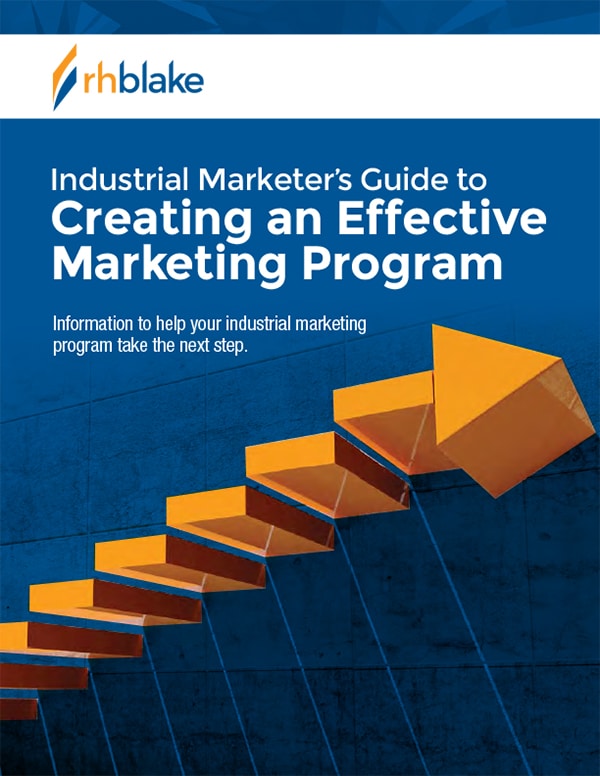
Industrial Marketer’s Guide to Creating an Effective Marketing Program
147 pages of actionable ideas to help you create a winning marketing strategy and program

Industrial Marketer’s Guide to Creating an Effective Marketing Program
147 pages of actionable ideas to help you create a winning marketing strategy and program
Related Clients


